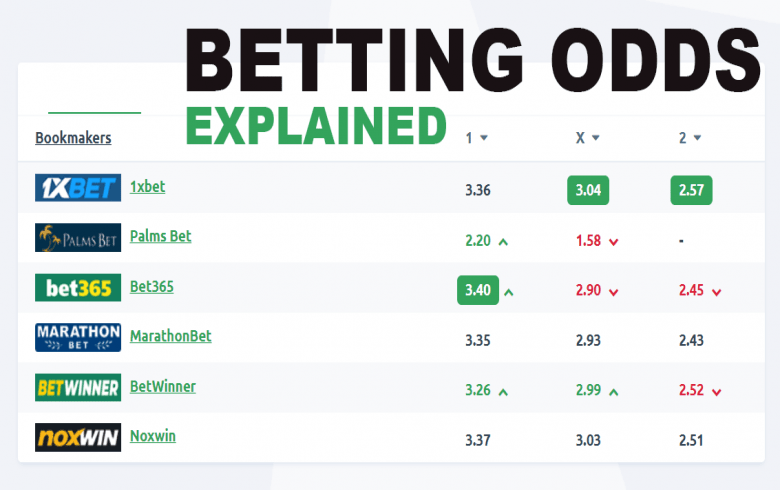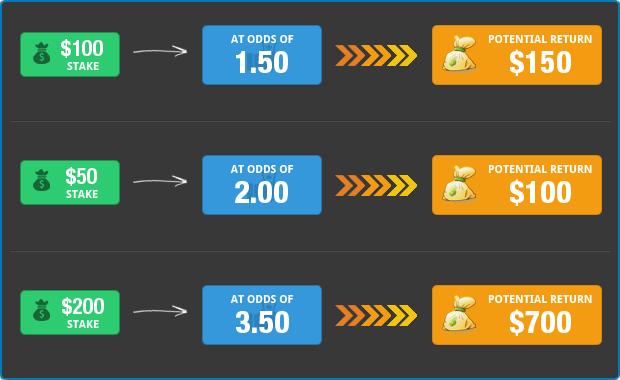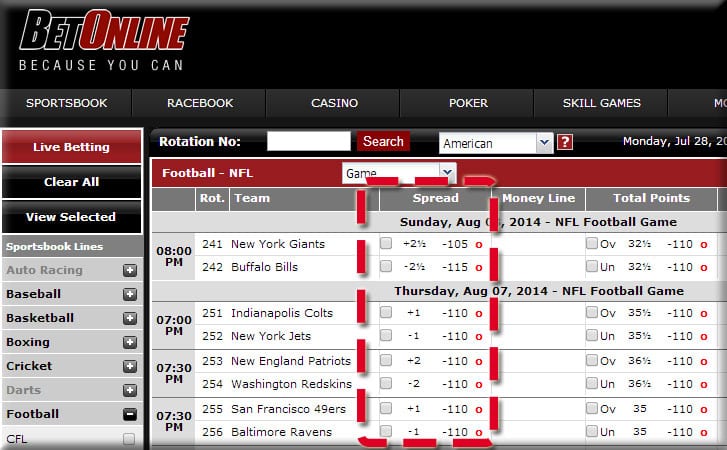Title: Cracking the Code: How Do Odds Work in Betting?
Introduction:
Hey there, fellow bettors and curious minds! Are you ready to unravel the mysterious world of odds? Whether you're a seasoned gambler or a newbie looking to dip your toes into the exciting realm of betting, understanding how odds work is key to maximizing your winning potential. So, let's embark on this thrilling journey together and demystify the wonders of betting odds!
1. Embrace the Three Amigos: Decimal, Fractional, and Moneyline Odds:
When it comes to odds, you'll encounter three popular amigos: decimal, fractional, and moneyline odds. These buddies might seem a bit intimidating at first, but fear not! They are just different ways of expressing the same concept: your chances of winning.
2. Decimal Odds: The Universal Language of Betting:
Imagine you're wandering the streets of Paris, savoring a delicious croissant while placing bets on your favorite sports team. Decimal odds, commonly used in Europe and online betting platforms, are as simple as ordering a café au lait. These odds represent your total return, including your original stake. For instance, if you bet $10 on a team with odds of 2.50, you'd get back
How do odds wok in betting
Testimonial 1:
Name: Samantha Anderson
Age: 28
City: Los Angeles, CA
I have always been intrigued by the world of sports betting, but understanding how odds work was a bit of a mystery to me. Thankfully, I stumbled upon an article that explained it all in a simple and fun way. The article titled "How do odds work in betting?" was an absolute game-changer for me. It broke down the concept of odds in such a light and arbitrary manner that I couldn't help but be amazed. Now, I can confidently navigate through different betting platforms, calculating odds and making more informed decisions. Thanks to this article, my betting experience has become all the more exciting and rewarding!
Testimonial 2:
Name: Michael Thompson
Age: 35
City: New York City, NY
As someone who loves a good bet every now and then, I was always curious about the inner workings of odds in betting. I must say, the article "How do odds work in betting?" was an absolute revelation! The author's ability to explain complex concepts in such a light and arbitrary style left me in awe. Not only did I learn how odds are calculated, but I also gained a deeper appreciation for the mathematics behind it all.
How do odds work when betting
Hey there, fellow bloggers and betting enthusiasts! Are you curious about how odds work when betting? Well, you've come to the right place! Today, we're going to dive into the exciting world of betting odds and unravel the mystery behind them. So, grab a cup of coffee, sit back, and let's get started on this thrilling journey!
Now, before we delve into the nitty-gritty details, let's make sure we're all on the same page. Betting odds are basically a way to determine the probability of a certain outcome in a given event. They're the magical numbers that help us decide where to put our hard-earned money when we're feeling lucky.
In the United States, odds are generally presented in three different formats: American, Decimal, and Fractional. Don't worry, we won't bore you with complex calculations or mind-numbing formulas. We're all about keeping things fun and unobtrusive, after all!
Let's start with the American odds, shall we? These odds are often referred to as moneyline odds and are displayed with either a positive or negative sign. If you see a positive number, such as +200, it means that you could potentially win that amount for every $100 you bet. So,
How do gambling odds work?
Calculating Winnings
Odds of 7/5 mean you'll win $7 for every $5 you wager on the A's. Conversely, the Rangers' odds of 5/8 mean you need to wager $8 to win $5 on Texas. Another way to look at it: If the first number is larger than the second, you're betting on the underdog for a higher potential payout.
What do +7 odds mean?
If you bet the Cowboys -7 and they win by more than seven points, you win your bet. Similarly, if you bet the Packers +7 and they lose by less than seven points or win outright, you win your bet.
What does 3 to 1 odds mean?
For example, 3/1 odds mean you profit three times the amount you wagered. A $1 bet at 3/1 would pay out $4 in total, or a $3 profit and your $1 original wager. Conversely, 1/3 odds mean you profit a third of what you wagered. A $30 bet on 1/3 odds would return $40 total, or a $10 profit and your $10 original wager.





How do you calculate winnings on odds?
In order to calculate your potential payout you simply multiply your stakes (the amount of money you wagered) by the odds. For example, if you bet $100 on the Pistons beating the Knicks at 2.25 odds, your total potential payout would be $225 ($100 x 2.25).
Frequently Asked Questions
What does plus 200 odds mean?
They are American money line odds; for example, +200 signifies the amount a bettor could win if wagering $100. If the bet works out, the player would receive a total payout of $300 ($200 net profit + $100 initial stake).
What betting odds are better?
A minus sign indicates a bookie's favorite to win while a plus symbol indicates an underdog. A -250 favorite has a better chance of winning an event than a -150 favorite, while a +200 underdog has a better chance of winning than a +500 underdog.
What is +200 odds?
They are American money line odds; for example, +200 signifies the amount a bettor could win if wagering $100. If the bet works out, the player would receive a total payout of $300 ($200 net profit + $100 initial stake).
How do betting odds work for dummies?
Sports Betting Odds for Dummies
Higher odds suggest an event is less likely to occur but carries the promise of a hefty payout if it does happen. Conversely, lower odds indicate something is more likely to occur but will yield a smaller payout.
What are good betting odds?
If you are given odds better than one-in-two, it's a good bet. Typically you won't know the exact odds because sporting events aren't that predictable, but this is a key principle to keep in mind when evaluating a bet, especially on a moneyline.
Which odds mostly win in football betting?
Low odds bets have a higher probability of winning, but the potential payout is relatively low. High odds bets have a lower probability of winning, but the potential payout is much higher.
Is 13 5 good odds?
The implied win probability of 13/5 odds is 27.78%. If you'd like to see the implied win probability of other odds values you can check our Moneyline Converter. Fractional Odds of 13/5 when converted to American odds are +260 and when converted to decimal odds are $3.60.
FAQ
- What are considered good odds?
- The phrase “good odds” has multiple meanings. They're all qualitative, but they suggest certain quantitative ranges of probability. “He's got good odds of making a success of his business.” This means a substantial likelihood, but suggests less than 50% because we don't say “He's likely to” or similar phrase.
- What are really high odds?
- What are high odds? High odds would be something like 99-to-1 against. If you bet on a team with those odds, you'd be happy if they won because you'd win a lot of money, but these aren't the odds you want if you need something to happen because 99-to-1 is a long shot.
- Are 20 to 1 odds good?
- What 20-to-1 means: When you see 20-to-1 odds, you're looking at a long shot that is unlikely to win. In fact, the implied win probability for a team that's 20-to-1 is 4.76%. However, should that long shot come in, it would pay out $20 for every $1 wagered.
- What does 20 to 1 odds pay?
- Odds Conversion Table
Fractional Decimal American 9/1 10.00 900 10/1 11.00 1000 20/1 21.00 2000 50/1 51.00 5000 - How do you interpret odds?
- American odds For favored bets, the bet odds will start with a negative number and they tell you how much you need to bet to win $100. If the odds are -110, a common number for a bet involving a spread, you would need to bet $110 to win $100. If your odds are -200, you would need to bet $200 to win $100.
- How do you explain game odds?
- Odds of 7/5 mean you'll win $7 for every $5 you wager on the A's. Conversely, the Rangers' odds of 5/8 mean you need to wager $8 to win $5 on Texas. Another way to look at it: If the first number is larger than the second, you're betting on the underdog for a higher potential payout.
- What does odds of 10 to 1 mean?
- Whenever you see two numbers separated by a slash, i.e. 10/1, this is a fractional betting odd. Fractional odds allow you to calculate how much money you will win on your bet in comparison to you stake. The number on the left(e.g. 10) is how much you will win. The number on the right is how much you need to stake.
How do odds work in betting
| What does 7 to 5 odds pay? | The odds and what they mean
|
||||||||||
| How do you play the odds game? | One player asks another how likely they are to complete a dare, and then the second player picks a number between 2 and 100 as a limit for a number range. Both players then choose a number within the range. If you say the same number, the person who was dared must follow through with it! | ||||||||||
| How do you read game odds? | Whereas negative (-) odds tell you what you have to bet on the favorite to win $100, positive (+) odds tell you how much you'll win for every $100 you wager on the underdog. So, a team with odds of +120 would payout $120 for every $100 wager. | ||||||||||
| What is the rule of odds? | The rule of odds states that when you're including a group of subjects in your photo, an odd number, rather than an even number will produce a more interesting, and visually pleasing composition. | ||||||||||
| What does a +200 money line mean? | What Does a +200 Money Line Mean? A +200 money line would mean that if you placed a $100 bet, you would win $200. It also tells you that the team is not expected to win, as it is the underdog in the game. | ||||||||||
| What do negative odds mean? | Odds with a negative (-) symbol indicate the betting favorite. The number that follows the negative symbol (the odds) reveals how much to bet for every $100 you want to win. For example, as explained above, if the team you're betting has -110 odds, you need to wager $110 to win $100. | ||||||||||
| How do plus minus odds work? | A plus (+) represents longer odds, in which case you'll win more for your wager, while a minus (-) means you're betting on a more likely outcome (as deemed by the sportsbook) and will win less when you emerge victorious. For example, $100 on +110 odds wins you $110, while $110 on -110 odds wins you $100. |
- What is the difference between chances and odds?
- Chance is the likelihood that a particular outcome for an event will occur. Odds are the ratio of the probability of an event occurring to the probability of it not occurring. Calculate odds for winning or odds against winning as a percent.
- What do odds really mean?
- In probability theory, odds provide a measure of the likelihood of a particular outcome. They are calculated as the ratio of the number of events that produce that outcome to the number that do not. Odds are commonly used in gambling and statistics.
- Does higher odds mean more chance?
- High odds are when a betting selection could produce a large payout, but the bet is less likely to happen. In contrast, the term low odds means an outcome that is more likely to happen, but for less value.
- How do you convert chance to odds?
- Now for minus american odds you take whatever that minus number is convert it to a positive. And then divide that by itself plus a hundred. So an example might be minus 200. So here we would take 200.
- Is 50 to 1 odds good or bad?
- Betting odds of 50/1 imply a probability of 98.04% for one outcome and 1.96% for the other implied odds option outcome. In other words, when you place a 50/1 bet, your chances of winning are 1.96%, and your chances of losing are 98.04%.
- Are higher or lower odds better?
- High odds are when a betting selection could produce a large payout, but the bet is less likely to happen. In contrast, the term low odds means an outcome that is more likely to happen, but for less value.
- How good are 2 to 1 odds?
- The larger the second number in the fraction, the less likely the event is to occur, and the higher the potential payout. For example, odds of 2/1 indicate that there is a 33.33% chance of the event occurring, while odds of 7/2 indicate a 22.22% chance.

